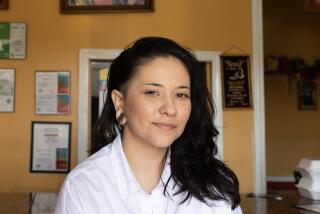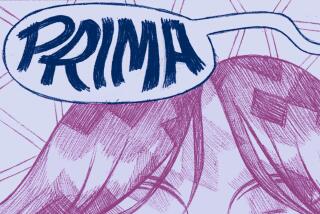A CHILD’S WORLD: <i> What shapes the way we grow up.</i> : Breaking Ties With Tradition
Although some parents manage to pass along to their children the same interests, passions, hobbies and eccentricities that their parents passed to them, others, in a manner of speaking, fumble the intergenerational football.
For varying reasons, the handoff from parent to child is never made. Many familial endeavors--including everything from sewing to cooking to worm farming--are, for the most part, long gone.
Take, for instance, the case of Bob Russi, 56, of Whittier. As far back as anyone in his family can remember, it had been a family practice for the Russi’s to jar and can their own fruits and vegetables. This wasn’t just a routine household chore, it was what was done--what had been done for generations.
Russi’s parents were Italian immigrants who settled in Rochester, N.Y., before World War II.
“My parents would can peaches, tomatoes, apricots, pickles, grape jelly, all kinds of things,” said Russi, who owns a painting business. “They used to go to the market and buy bushels of fruits and put them up. Both my parents would help, and all (nine) of the kids would help, too. It was fun, we all looked forward to it.”
Nonetheless, Russi and his wife, Jo Anne, a bank executive, have not passed the activity on to their two boys because of time restrictions.
“Everything is so easy to buy today,” Russi said. “And the cost of doing the fruit yourself is more these days, plus the time involved, I guess it isn’t practical.”
Still, he admits he misses the spirit of the canning episodes with family members, and, of course, the fruit itself.
“Hard to beat the taste of that fruit,” he said. “I miss that a lot.”
Wayne Jones, 36, of Riverside, also has seen a tasty family tradition grind to a halt in more modern times.
When Jones was growing up, every Sunday night, his parents gathered their seven children to make home-made ice cream. It was, he said, the “highlight of our week.”
“We had this old hand-crank machine--my mom still has it--that each kid would take a turn cranking,” Jones said. “Ten cranks for each year of your age. After a while it’d get pretty stiff turning that thing.
“We’d mix in fresh strawberries or peaches. Man, it tasted good.
“Neighbors and relatives would come over for some. We really looked forward to it. That’s one of the things I really miss from my childhood.”
As for passing the tradition on to his two children, who are 5 and 3, Jones said, “I have an electric ice cream maker now, so it’s not the same. I don’t have seven kids to help crank the old one. Plus, I work every other Sunday night, so we just don’t have the opportunity to do it.”
Much of what Linda Durden, 35, of Altadena, knows about her grandfather, Helmut Foth, she’s learned from the wood carvings he created during his life.
Foth was a professional wood-carver who eventually passed the craft, as a hobby, to his son, Ullrich Foth. As a young girl, Durden was introduced to the rudiments of the art and later was given a set of carving tools once owned by her grandfather.
“That’s about as far as it got,” said Durden, now a schoolteacher who is married with three children. “I use the tools for home construction projects, but I never mastered the craft (of wood carving). I didn’t have the artistic talent for it.”
Not all is lost, however. Recently, Durden’s 12-year-old son, Justin, received a wood carving merit badge as a Boy Scout, taking a few lessons from Ullrich Foth along the way.
Still, Durden said, with myriad ‘90s kind of activities available to her son, chances are slim he’ll take to wood carving.
“He might, but . . . I don’t know,” she said. “It’s kind of sad. It once was a big thing in my family, but now it’s become a lost art.”
More to Read
Eat your way across L.A.
Get our weekly Tasting Notes newsletter for reviews, news and more.
You may occasionally receive promotional content from the Los Angeles Times.










